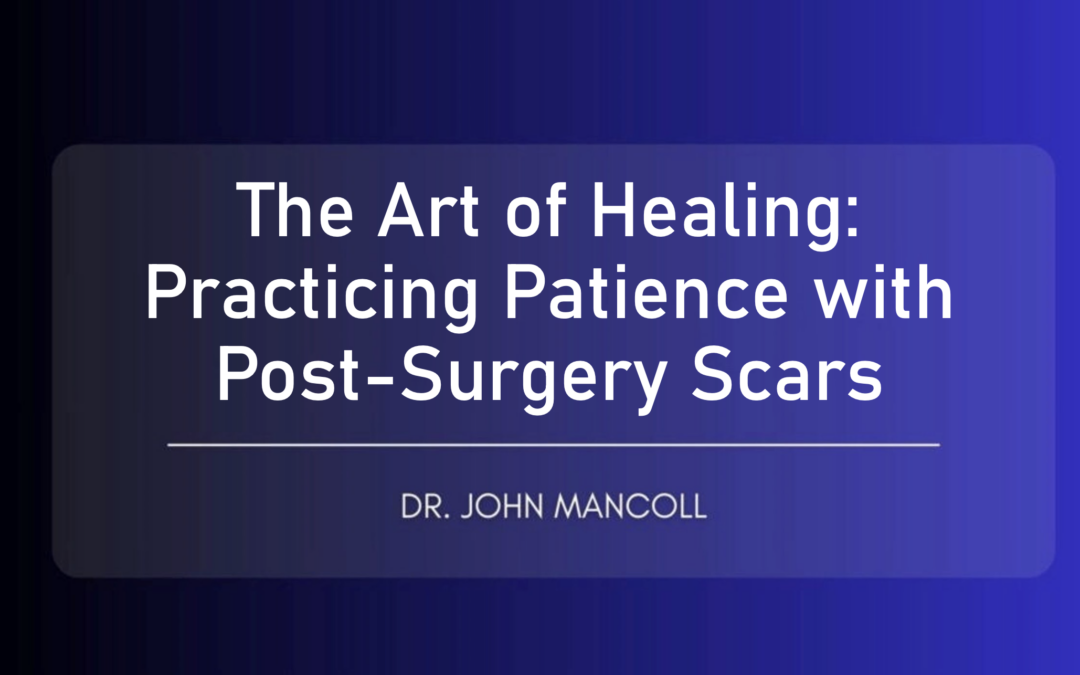Cosmetic surgery is a deeply personal journey. Whether it’s a subtle tweak or a dramatic transformation, the decision to alter one’s appearance through surgery is often made with high hopes, careful thought, and a desire for improved confidence. But while the excitement of unveiling the “new you” is real, there’s an integral part of the process that can often feel discouraging: the scars.
It’s natural to want immediate results, after all, you’ve invested time, energy, and treasure into this transformation. But here’s the truth: healing takes time, and when it comes to post-surgical scars, patience isn’t just a virtue—it’s a necessity.
Understanding the Healing Timeline
The human body is remarkable, but it works on its own schedule. After cosmetic surgery, the skin and underlying tissue require time to repair themselves. Scars may initially appear red, raised, or uneven. This is completely normal.
Most scars go through a predictable healing process:
- 0–6 weeks: The scar may be red, swollen, and tender.
- 6 weeks–3 months: The area begins to flatten, and redness starts to fade.
- 3–12 months: The scar continues to mature—fading in color, softening, and becoming less noticeable.
Some scars can take up to two years to fully mature. When undergoing a cosmetic procedure, it’s important to understand that incisions leave scars that fade over time but will be there forever. Therefore, you should be aware of and accepting of that before deciding to have an elective procedure. Additionally, it is important to consider that every person heals differently, based on factors such as skin type, age, genetics, and proper adherence to post-operative instructions.
When scars are healing, it’s essential to monitor for signs of infection, such as fever, worsening redness, warmth, swelling, or abnormal colored drainage. Healthy healing scars may itch or feel tight, but excessive pain or changes in color can indicate a problem. Also, you should keep an eye on the scar’s size and texture—if it becomes raised, overly thick, or spreads beyond the original wound, it could be a keloid or hypertrophic scar forming, which requires attention from your healthcare provider to help prevent it from worsening.
What You Can (and Can’t) Control
There are things you can do to support your body’s healing:
- Follow your surgeon’s aftercare guidelines.
- Avoid sun exposure on healing scars—UV rays can darken them.
- Use silicone sheets or scar gels if recommended.
- Stay hydrated and eat a nutrient-rich diet to promote tissue repair.
- Don’t overdo daily activities, refrain from putting too much tension on your incisions in the early stages.
- Avoid smoking, which can impair healing and worsen scarring.
- Make sure support garments fit properly and aren’t too tight or excessively rub against your incisions
- Ask your doctor if broadband light therapy or microneedling treatments are recommended, and when to start if recommended
What you can’t control is how fast your body will make those scars fade. That part requires one key ingredient: patience.
The Mental Side of Scar Healing
For many, scars are more than skin-deep. Some patients find it challenging to be patient with the healing process and the delay in seeing the final results they are waiting for.
It’s easy to fall into the trap of comparing your healing journey to someone else’s online “after” photo. However, remember that social media rarely shows the full picture—just the highlights.
Embracing Progress
Celebrate the small wins: reduced swelling, faded redness, improved texture. These milestones are all signs of progress and that your body is doing exactly what it’s supposed to. Remember that healing is a gradual process.
Final Thoughts
The “after” pictures you often see and use as an example of the results you’re hoping for are usually not taken right after surgery. To truly see your final results, the body’s tissues need time to settle, swelling requires time to resolve, and scars take time to heal and fade. Be kind to yourself and give your body a chance to do its job.

